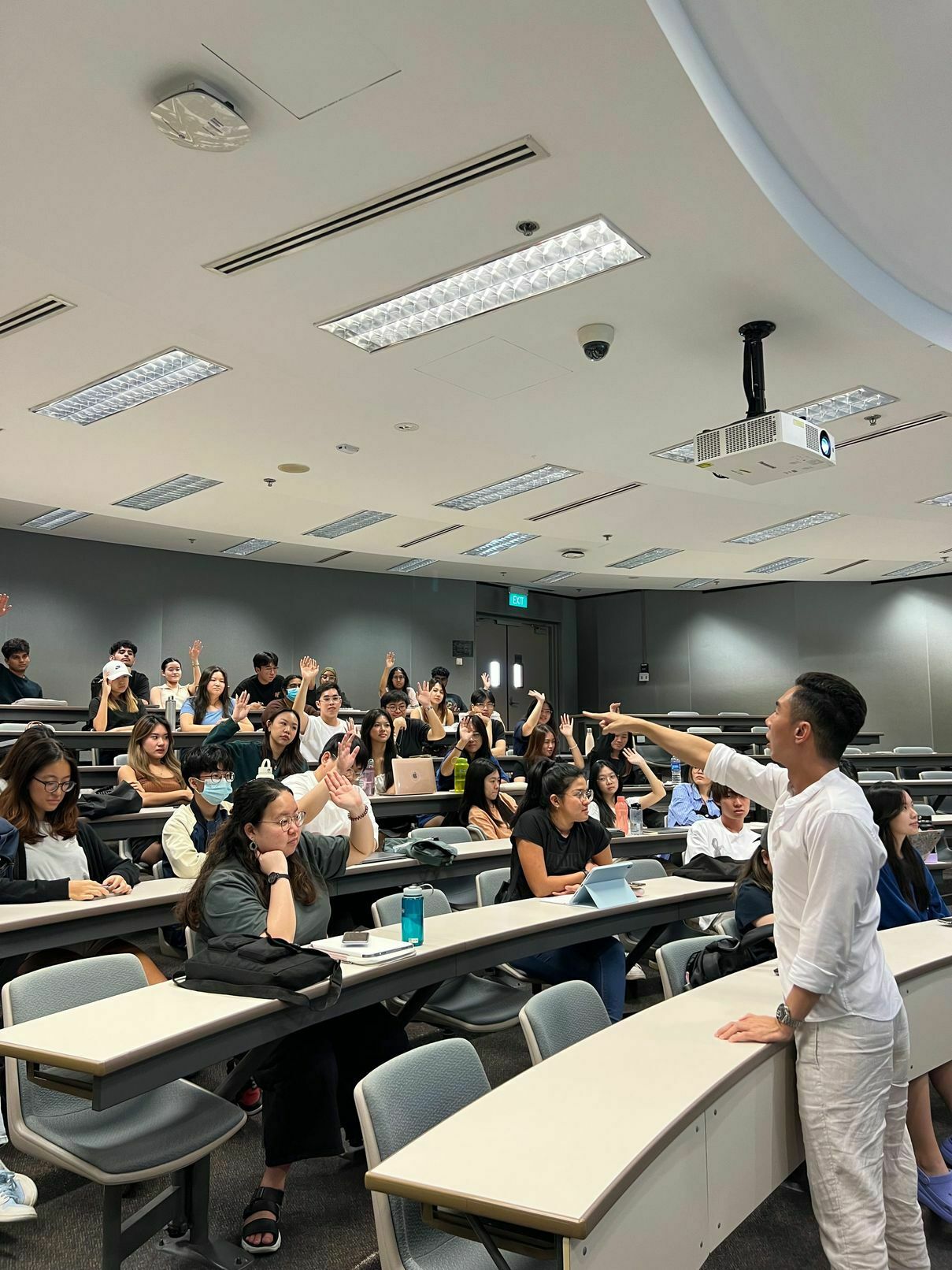If you have visited MRT stations or travelled by train recently, your ears would have likely detected a few curious new sounds.
Created collaboratively by SMRT and local non-profit arts company, The TENG Company, these new auditory additions are tuneful chimes not unlike those that play at subway stations in countries such as South Korea and Japan.
Now being rolled out at over 70 MRT stations on the Circle Line, North-South Line, and East-West Line after a three-month pilot testing period, they are "audio guides" that assist the visually impaired during their daily commute.
According to The TENG Company's Creative Director and Co-Founder Dr. Samuel Wong, the original goal of TENG's collaboration with SMRT was to create music to enhance the experience of commuters. The focus later shifted to creating chimes, following a suggestion he made.

A collaborative effort
Before getting to work on the chimes, Dr. Wong, who is also a musicologist, recognised the need to involve members of the visually impaired community in the project due to his own limitations.
"If we see, we actually have a bias towards certain types of sounds," he explained in an interview with Hear65.
To counter this, he decided to bring Mr. Tan "Uncle Song" Chiew Song, whom he had been friends with for more than a decade, on board.
Uncle Song, who began to experience vision loss in his 30s, has been dubbed the "The Blind Masseur of Tanglin Halt" by local media for his work at Singapore-based massage parlour Song & Grace — The Visually Impaired Massage.
"He (Dr. Wong) [would] show me all of the [chimes] and every time, we [would] at least spend one hour to listen to the [chimes] and talk about [them]," recalled Uncle Song.
With the help of his old friend, Dr. Wong proceeded to assemble a focus group with visually impaired individuals across different genders and backgrounds to aid him in his research. He then used the feedback given by the participants to improve the prototype chimes that he had created.
Quantitative research, which involved participants voting for their favourite chimes, was also conducted with a pool of 80 students from the University at Buffalo-Singapore Institute of Management, where Dr. Wong is an adjunct faculty member.

Improving the commuting experience through sound
One discovery that he made during the process was that the visually impaired are more likely to be able to tell two sounds apart if there is a great difference between their textures, something he took into account while working on the chimes.
"We took the folk song 'Chan Mali Chan' and created something that was very bright and then something that was very dark. And for the bright, we used something like a glockenspiel as an instrument. And then we also used a marimba as an instrument [for the dark version]," he explained.
At MRT stations, the chimes' different sound textures tell the visually impaired which directions trains are travelling in. The chimes are also designed in such a manner that they can be played simultaneously should more than one train arrive at the same time.
Dr. Wong shared that the chimes can both be played together to form a song or be played one after another.
"It's as if we created musical anagrams in that sense," he said.
He also explained that the bright sounds of some chimes are naturally easier for commuters to pick up on in noisy trains and stations while the lower sounds are made more noticeable by the number of "hits" they are accompanied by.
"When there are multiple notes, there's a higher chance for you to be able to notice the [chime]. But if you want to have long notes, it doesn't work. So there was some form of 'UX design' that actually happened here," he said.

Before the chimes came into existence, visually impaired individuals, such as Uncle Song, relied on environmental sounds and the movement of those around them as guides while travelling by train. Navigation was at times made more difficult by the noise within stations.
Uncle Song said that SMRT and The TENG Company's initiative is beneficial to members of this community: "I feel that [the chimes] make it easier for the visually impaired to tell the directions that trains are moving in."
"I believe that there will be more visually impaired individuals who will dare to take public transport in a more confident manner," he continued.
Apart from serving as audio guides for those living with visual impairment, the chimes make commuting easier for those who do not read or write Singapore's four official languages and young children.
A Singaporean "sonic identity"
If the chimes sound familiar, it is because they are based on three tunes that most would have heard during their childhood years or at events such as the National Day Parade.
Representing Singapore's different races, the songs were selected to "foster a sonic identity" among Singaporeans.
'Chan Mali Chan', a popular folk song, was chosen as the tune that would represent Singapore's Malay community. It was also seen as a good fit for the project due to its fast pace.
Dr. Wong shared: "When we were creating these [chimes], we actually put the speed to around crotchet equals hundred. We did that because this mimics a stride and a larger faster stride when walking. So subconsciously, when we play the jingles, it prepares people to get onto a train faster or to move away from a train."
The Chinese children's song, 'San Lun Che', which translates to "Trishaw" in English, was picked because of its lyrics about transportation.
Finally, singer-songwriter, composer, and producer Shabir Sulthan's 2012 Tamil anthem 'Singai Naadu', which was created as an ode to Singapore, was chosen because of its "inspiring" and "soaring" melody line.
"When we build these chimes, [we] always want to build chimes to last. You don't want to have music that keeps changing all the time. It really confuses the commuters, and it really confuses the visually handicapped. What is something that lasts? It's folk songs because folk songs have a life inside them," explained Dr. Wong.
Uncle Song, whose personal favourite is 'San Lun Che', said that hearing chimes based on tunes he grew up with during his commute brings him much joy. He also said that he believes children will, too, be filled with happiness when they encounter the chimes.
"Outside of trains [and train stations], we will only hear these songs during Singapore's National Day celebrations. It's rare to hear them being played elsewhere, he shared.
Watch Dr Samuel Wong's interview with Hear65 here:
View this post on Instagram



